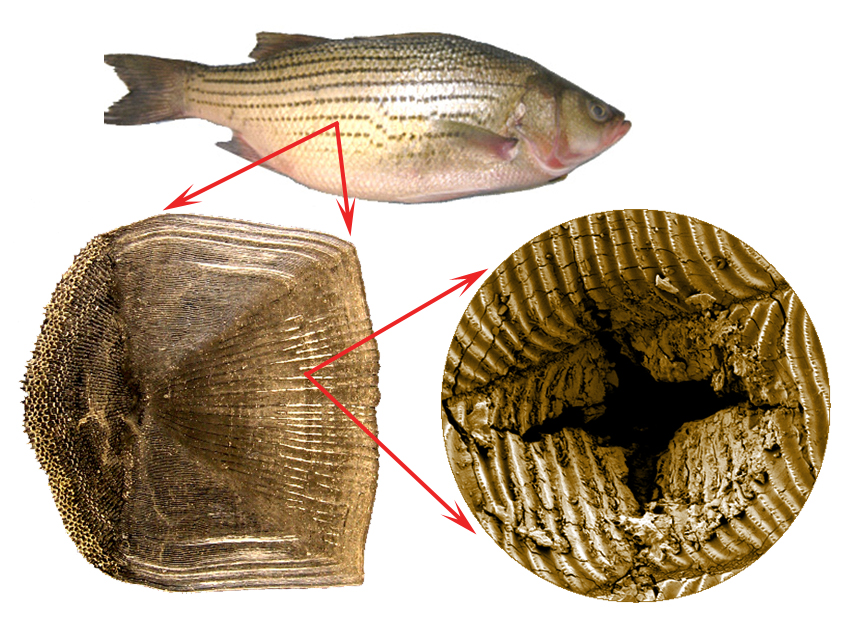Imagine a hockey player preparing himself for a game and donning his socks, skates… and fish scale shoulder pads. This is not as outlandish as it seems—researchers are using fish scales as the model for a new wave of stronger protective armour.
Since 2006, Francois Barthelat—associate professor of mechanical engineering at McGill and associate member of McGill Biomedical Engineering—has worked on synthesizing a new armour with incredible strength, flexibility, and lightness, modeled after the scale patterns on fish.
He first got the idea from the tough scales of striped bass, which are stronger than tooth enamel (the hardest material in the human body). Though the scales themselves are made of collagen and hydroxylapatite, which are not tough materials, the special structure allows the scales to withstand incredible pressure.
The scale material structure is comprised of layers that follow an alternating perpendicular pattern, like jenga blocks. The layers alternate between collagen, and a hard, mineralized material.
Barthelat has demonstrated the scales’ ability to provide significant protection for the fish. As opposed to a solid bony structure, they are thin and light, but still can deflect a sharp strike.
“You get something that’s like a full package for [protection] … It resists puncture and is highly flexible, light and thin,” he said.
If the hard scale surface does break, it breaks in a clean cross pattern that dissipates energy, with the soft cross-ply collagen absorbing the rest of the impact. Even a piercing predator’s tooth would struggle to rip through a thin layer of scales.
Barthelat modeled a new protective material after this structure. Using pressure tests, he compared his armour with polycarbonate, the current standard material in squash goggles and hockey gear. The tests proved his material was able to withstand 50 per cent more pressure than the best hockey and squash equipment.
The potential for novel designs inspired by nature is almost limitless; the challenge is seeing the engineering applications of familiar materials. “Fish scales are something people see everyday.”
“I think one of the most exciting things is that we […] do new things that nobody else has tried. I think it’s a great area to work in because there are so many materials to work with,” Barthelat said. “There are hundreds of other materials around us to work with that nobody has tried before.”







